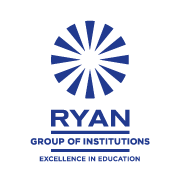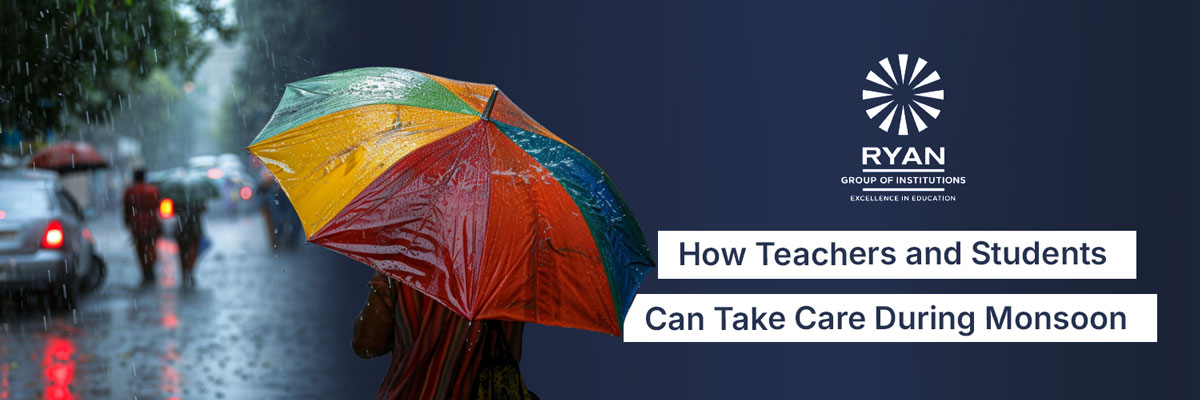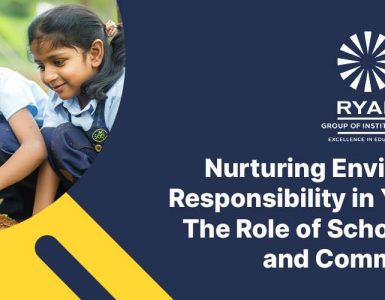Monsoon season often brings a sense of joy and relief. However, the rainy season also comes with its share of hassles, especially for school-going children. Slippery corridors, muddy shoes, dripping umbrellas, and the spread of common cold and cough become part of daily life.
In addition, infections and the accompanying diseases easily spread during the monsoon season, not only among children but also among adults. That’s why both teachers and students need to be a little more careful this season.
Here’s how schools can manage during monsoons so that unwanted stress and setbacks are eliminated and well-being is promoted.
Health Hazards During Monsoons
The combination of stagnant water, increased humidity, and sudden temperature fluctuations creates a perfect breeding ground for bacteria and viruses. Common illnesses during monsoon include:
- Viral fevers
- Respiratory infections like cold and cough
- Waterborne diseases such as diarrhea and typhoid
- Mosquito-borne illnesses like dengue and chikungunya
For students, even a mild cold can bring huge discomfort. For teachers, falling sick often means disrupted lessons and catching up later. Therefore, as the saying “prevention is better than cure” goes, it’s important to prioritize preventive measures during the monsoon.
Practical Hygiene Measures
Practical hygiene habits should be made integral part of children’s school behavior. This helps them develop a sense of responsibility towards self and others. Hygienic behavior helps not only during the monsoon seasons but also throughout the year.
- Clean Hands, Clear Minds
Teachers and parents should encourage students to wash their hands frequently, particularly after using the washroom, before eating, and after sneezing or coughing. Also, coughing into the elbow and covering the mouth while sneezing must be taught to the kids. Teachers can lead by example here. If soap and water aren’t always available, hand sanitizers must be kept handy in every classroom.
- Personal Towels and Napkins
Shared towels or handkerchiefs can spread infections quickly. Students should be advised to bring their own small towel or napkin to school. Teachers should also carry their own towels or napkins and set an example by practicing good personal hygiene. They should also discourage students from borrowing napkins from others. Equally important is the proper disposal of used paper napkins/tissues so that other children do not accidentally come into contact with those.
- Avoid Wet Socks and Shoes
Wet shoes and socks are not just uncomfortable; they’re breeding ground for fungal infections. Schools must encourage students to carry a spare pair of socks or wear sandals on particularly wet days. Teachers who commute through waterlogged roads can also carry a spare pair of socks or use waterproof footwear.
Keeping Classrooms Safe and Comfortable
In many schools, classrooms can become damp or even musty during the rains. This not only affects comfort but also students’ focus.
- Ventilation is key. Even during the rains, windows should be kept open occasionally to prevent mold buildup.
- Use of doormats at every entrance can prevent muddy floors and slips.
- Cleaning the floors everyday must be a mandatory practice during the monsoon. Water tracked in by shoes can make tiles dangerously slippery.
- Furniture checks should be routine. Wooden desks and benches may develop mold due to damp weather.
School management can take proactive steps to ensure classrooms remain a welcoming and safe environment, rain or shine.
Nutrition and Hydration
It’s easy to forget hydration in the cold, damp weather, but students still need to drink plenty of water. Dehydration can lower immunity and affect cognitive function. Parents should be reminded to send boiled and cooled water from home. Schools should ensure that water tanks are cleaned more frequently during this season.
As for snacks, this is the time to steer clear of unhygienic street-side treats. That tempting packet of fried samosas near the school gate may look appealing, but it’s definitely not a healthy option. Teachers should talk to students about “safe snacking” and use it as a great opportunity to link everyday choices to science and health.
Mind the Commute
For both teachers and students, getting to school during the monsoon can be a challenge. Roads may be flooded, buses delayed, or traffic more chaotic.
- Parents and children should be encouraged to leave early and avoid rushing through slippery paths.
- Raincoats and umbrellas should become a regular part of the school bag. For younger children, a properly fitting raincoat is often easier than an umbrella.
- Teachers who rely on public transport should try to build in extra buffer time into their commute and have a backup plan in case of unexpected delays.
It’s also wise for schools to have a clear communication system for weather-related delays or closures, be it via SMS, WhatsApp groups, or a notice on the school website.
Emotional Well-being During Gloomy Days
The monsoon can sometimes bring more than just physical discomfort. The lack of sunlight, grey skies, and being stuck indoors can affect mood and energy levels, especially in young children. Some students may feel more irritable, tired, or anxious during this time.
Teachers can help by:
- Starting the day with a short indoor movement activity or music
- Adding more visual learning tools and bright colors to the classroom
- Encouraging creative writing or storytelling sessions centered around rain and nature
These small efforts can help students feel more engaged and cheerful, even when the skies are dull.
Making the Most of the Season
Instead of treating the monsoon as an interruption, schools can treat it as a learning opportunity. Rainwater harvesting, the science of weather, poems about the rainy season – all these can be tied into classroom discussions.
By equipping both teachers and students with knowledge and practical tools, the monsoon can be transformed from an uncomfortable experience into a season of awareness, resilience, and shared responsibility.
After all, education isn’t only about exams and chapters. It’s also about adapting to the world outside the classroom – rain, shine, or storm.




